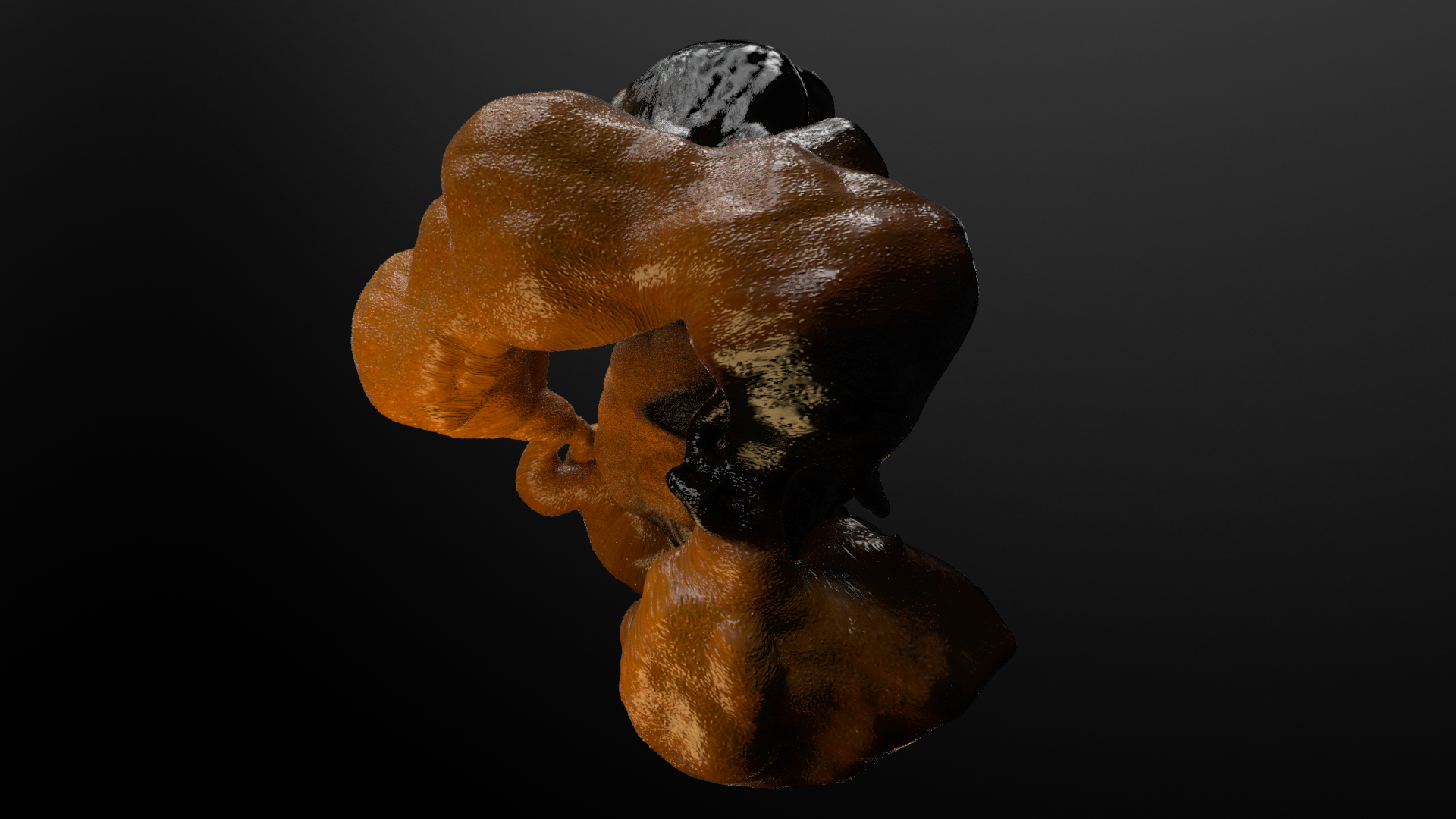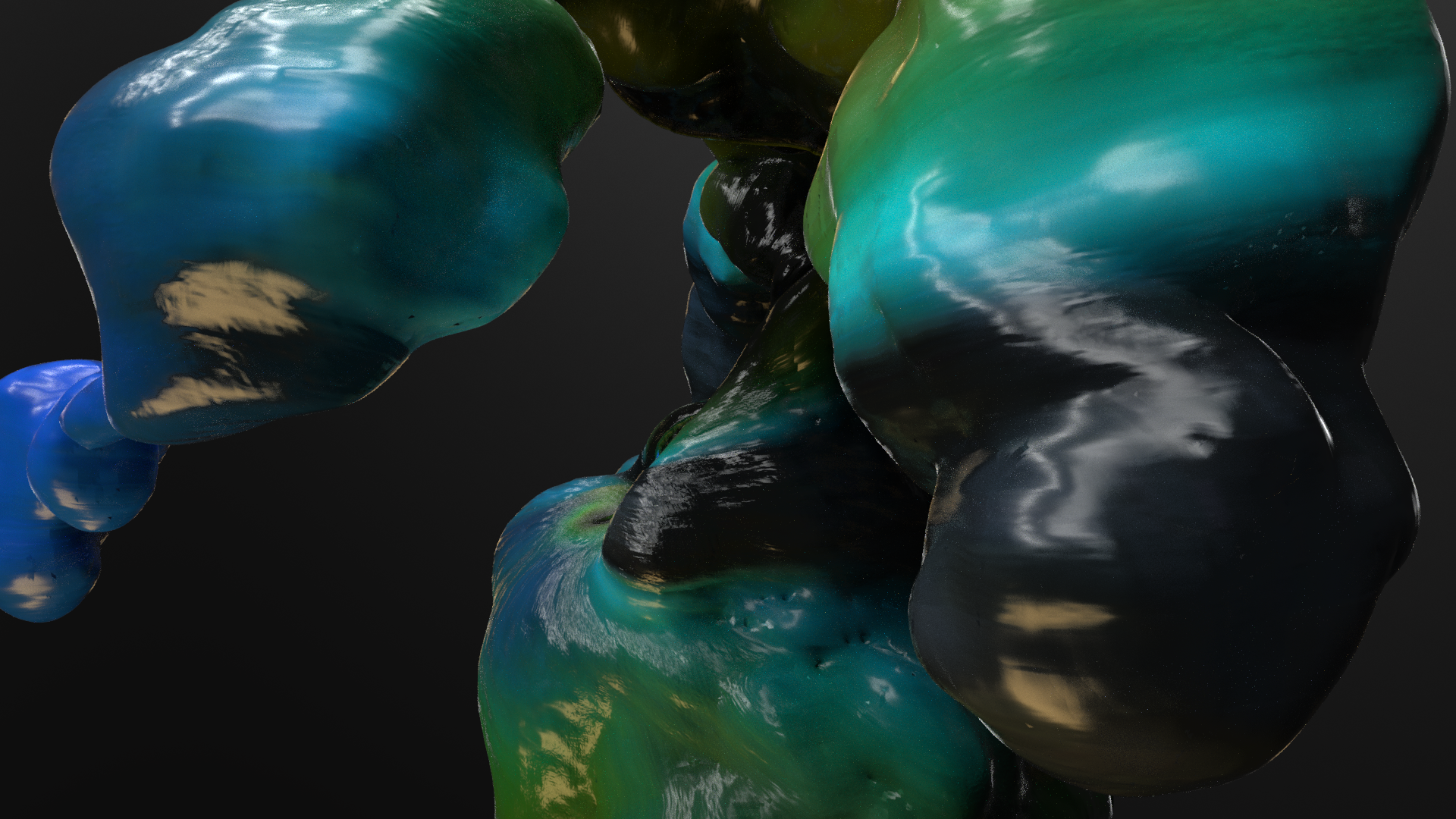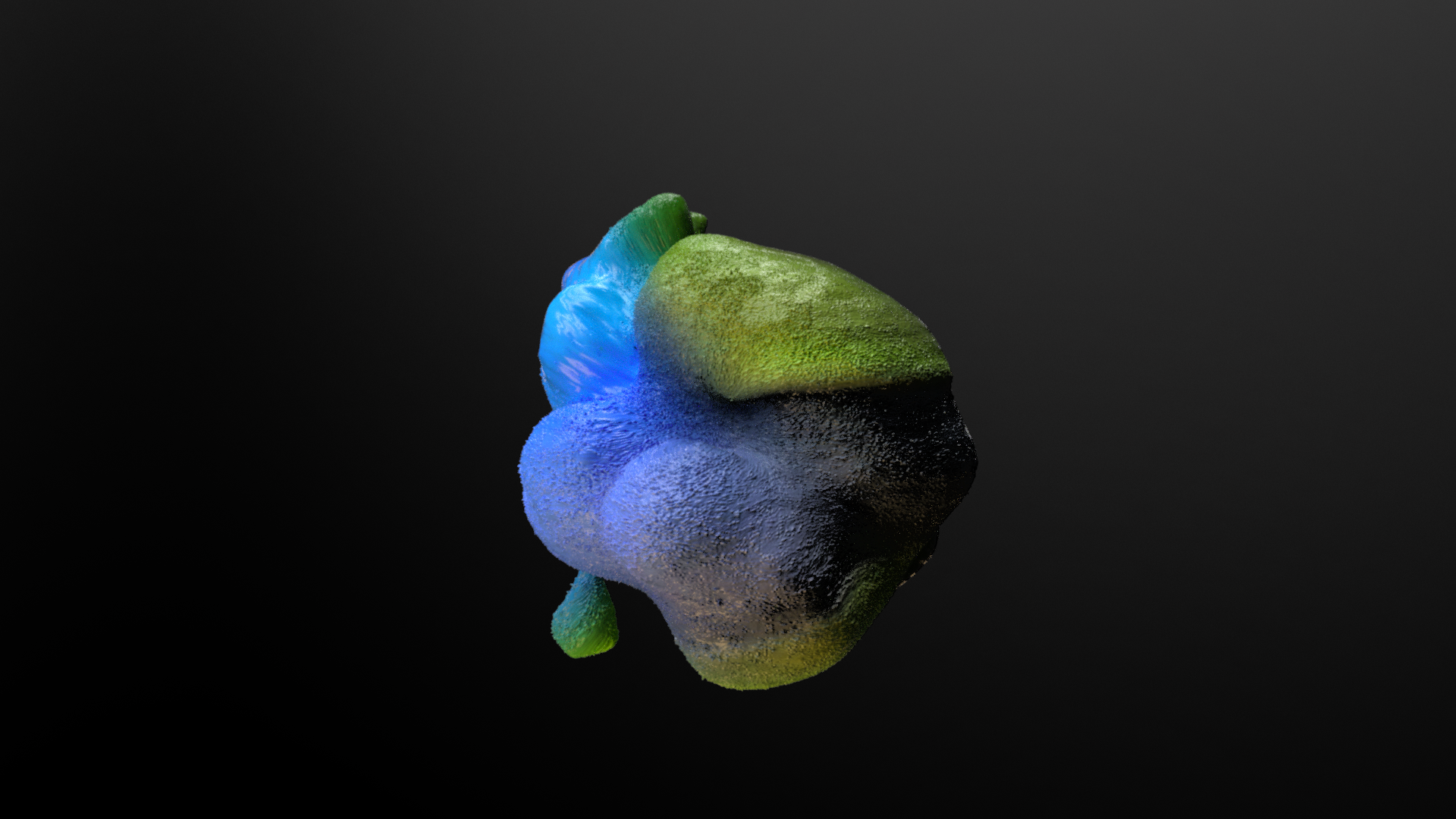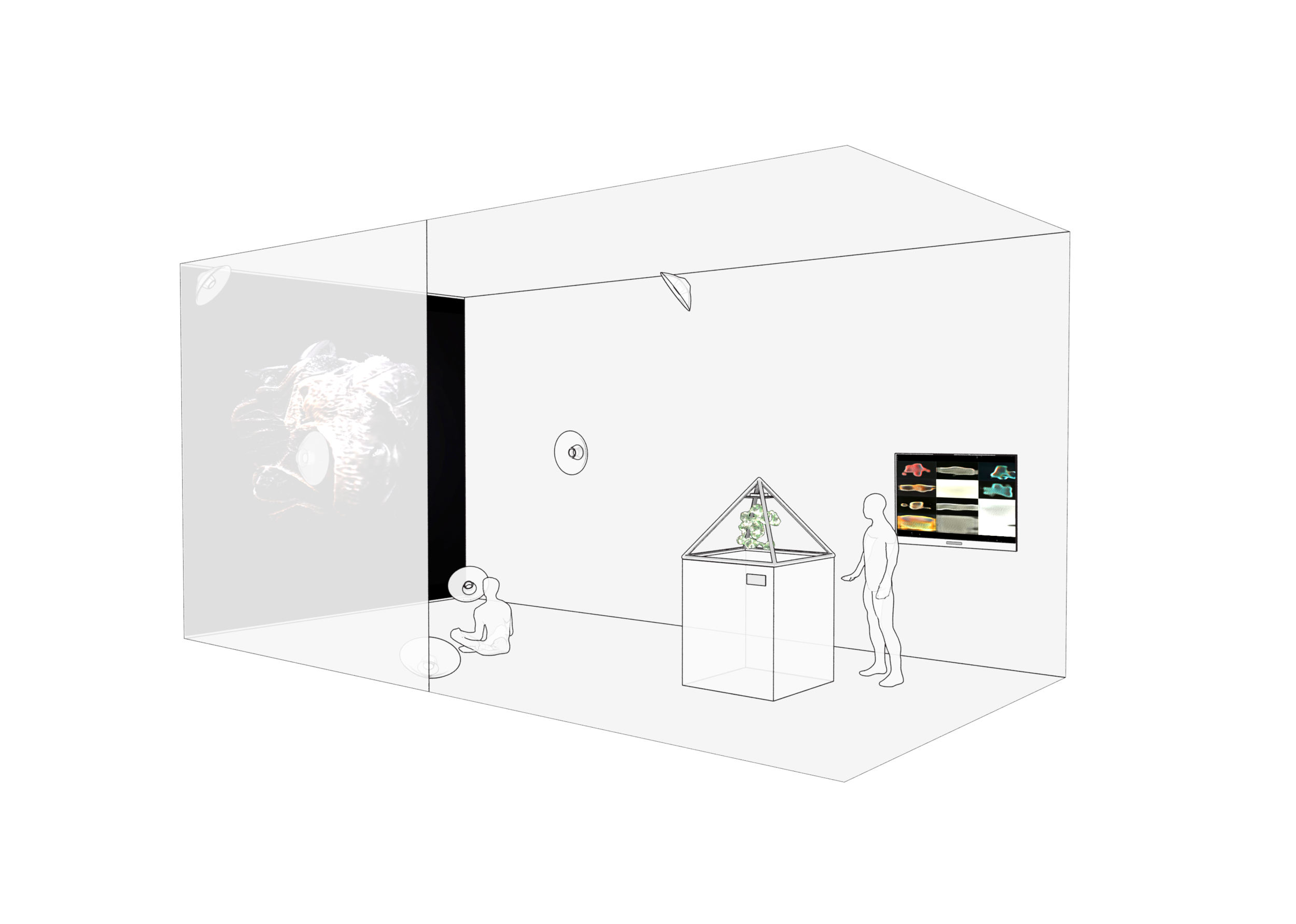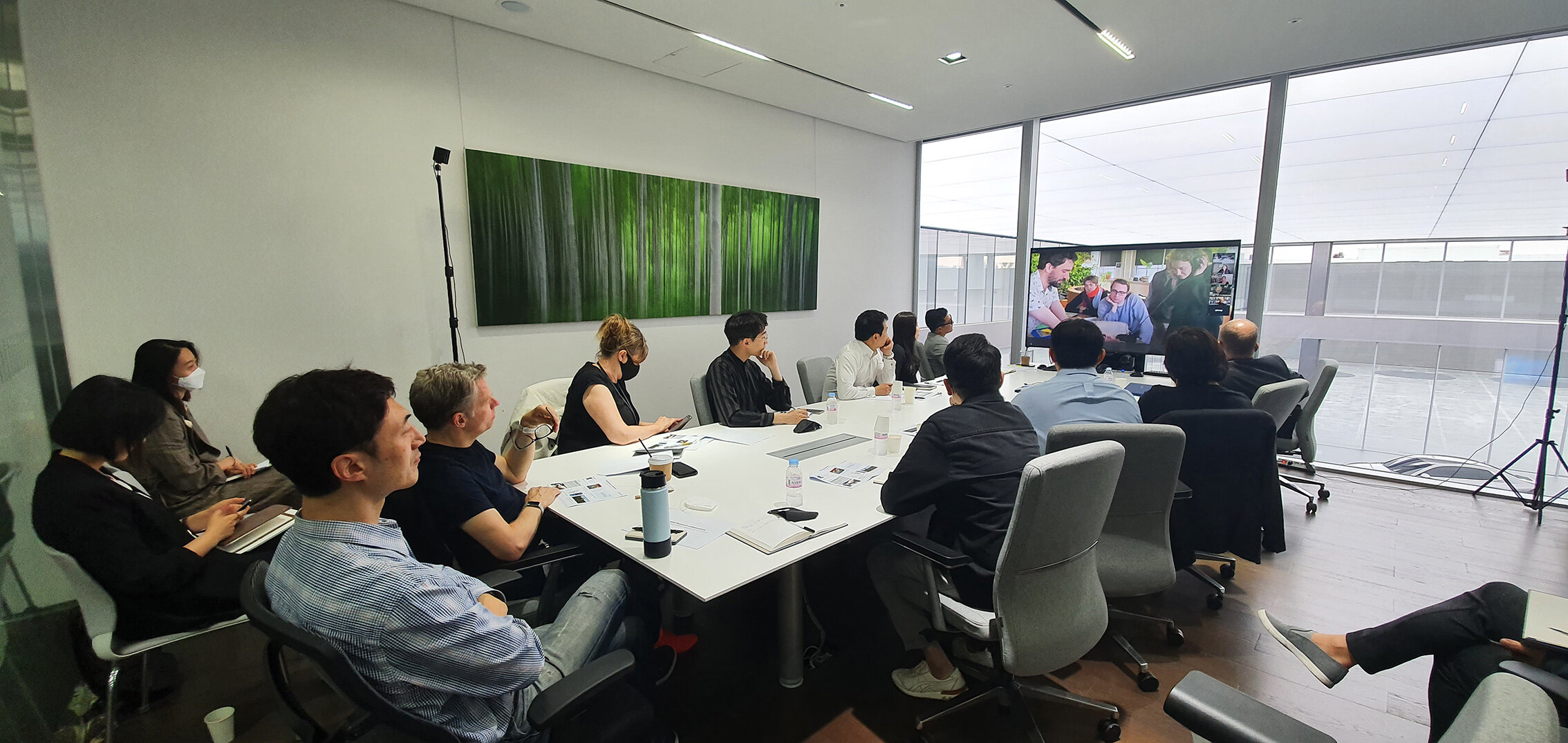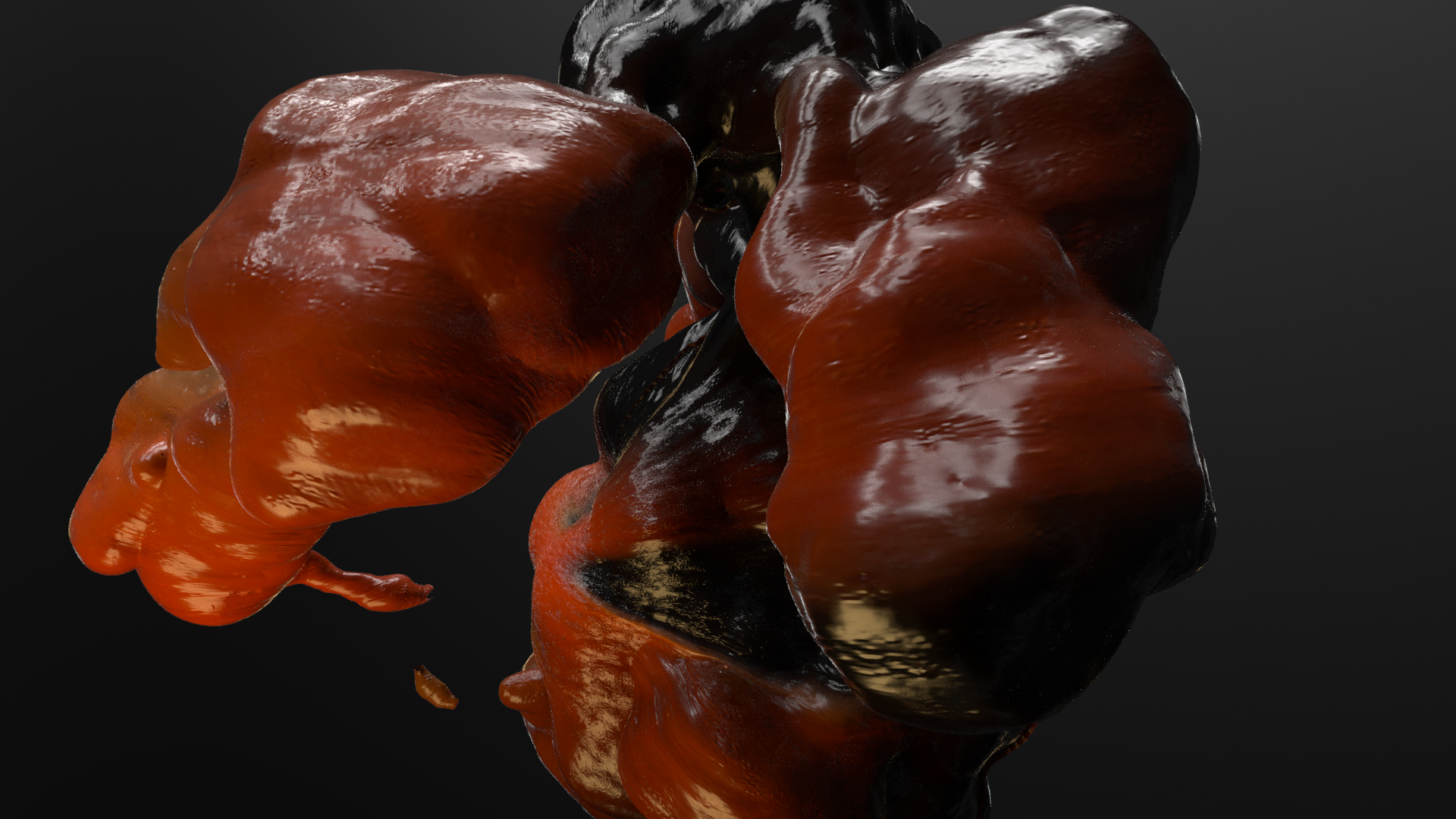From Order to Chaos
Collaboration with Rhode Island School of Design and Hyundai Motor Group
How does form emerge in Nature when the boundary between the natural, artificial, and automated becomes obsolete?
Video imagery created using machine learning (StyleGAN2) as a source.
Project led by Anastasiia Raina, working with Yimei Hu, Danlei (Elena) Huang, Meredith Binnette, and Qihang Li, with lots of help from A.I. Researcher Lia Coleman, and artist Shawn Greenlee.
Sound Design Process by Zack Davey and Qihang Li:
Inspired by these two processes, we began looking at electrical sound as a potential source of stimuli and a force that connects us across species and landscapes, connecting and firing up our brains, bodies, organisms, plants and fiber optic cables that connect us across continents and send signals back every time we run an internet search. Our sound design consisted of two coexisting sounds: that of manipulated white noise and self-produced electrical sounds. The electrical sounds were generated from sine waves in Ableton Live, altered and morphed via effects until fitting a sound that we associate with electricity. Our sample of white noise was altered via ambisonic (spatial) field recordings of the ocean. In the software Max/MSP, we programmed the amplitude data of the ocean field recording to control that of white noise. The recording was then translated back into ambisonic audio, in order for the white noise to spatially mimic the sound of the ocean itself. To facilitate communication with our StyleGAN models, we first took amplitude data from our recordings as well as the X,Y,Z coordinates of the spatial audio to determine the size and direction of the growth of our model. This data was then entered in manually into the software Cinema 4D to produce this growth.
The idea for using electrical sounds and white noise mimicking the ocean comes from the idea of cloud computing. Wireless technology is fetishized to the popular notion of data being transferred overhead through clouds. In actuality, the internet still exists in networks of wires found along the ocean floor. The electrical sounds of our process mimic the physical sound of electricity in clouds, as well as the immaterial sound of what we’d expect the internet to sound like in our own homes. The use of white noise mimicking the ocean refers to the complex travel of code across the world’s oceans. It represents a materialization of data structures, whose complex structures are mostly incomprehensible in scope, similarly to how we are unable to comprehend single frequencies within the full spectrum of frequencies found in white noise.
Featured in essay entitled “Machines Have Eyes”


